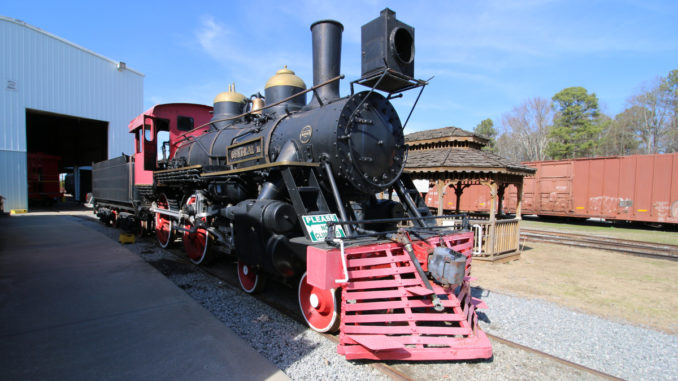
The Southeastern Railway Museum’s General II locomotive is named for one of the most famous engines to steam down the tracks.
Rogers, Ketchum & Grosvenor locomotive works in Paterson, N.J., built the original General in December 1855. It is today on display in Kennesaw, Ga.
Baldwin Locomotive Works in Philadelphia built the General II in 1919. It served as Red River & Gulf Railroad No. 104, Comite Southern No. 1 and Louisiana & Eastern No. 1 before relocating to Stone Mountain Scenic Railroad in 1961, where it was given the moniker General II.
The General II was the last steam locomotive the Stone Mountain Railway operated under its own power, which it did until 1986. The park in 1997 placed the venerable steamer on static display.
The Stone Mountain Memorial Association, the state authority responsible that owns Stone Mountain Park, donated the locomotive to the Southeastern Railway Museum in 2007. The museum moved it to Duluth the following year.
The original General locomotive gained fame during the Civil War when Union spies led by James J. Andrews stole it from Big Shanty, Ga., today known as Kennesaw, on April 12, 1862. Their goal was to destroy the Western & Atlantic Railroad between Atlanta and Chattanooga, Tenn., and help bring about the end of the Civil War.
Their mission failed, but several of the men were among the first to receive the Medal of Honor. Today, the episode is remembered as the Andrews Raid or the Great Locomotive Chase.
Even though they share a name, the locomotives are quite different. For example, the original General originally burned wood, while the General II burned coal.
However, both have a 4-4-0 wheel arrangement, meaning they have four leading wheels and four drive wheels. Locomotives with this arrangement are known as “American” style engines.
